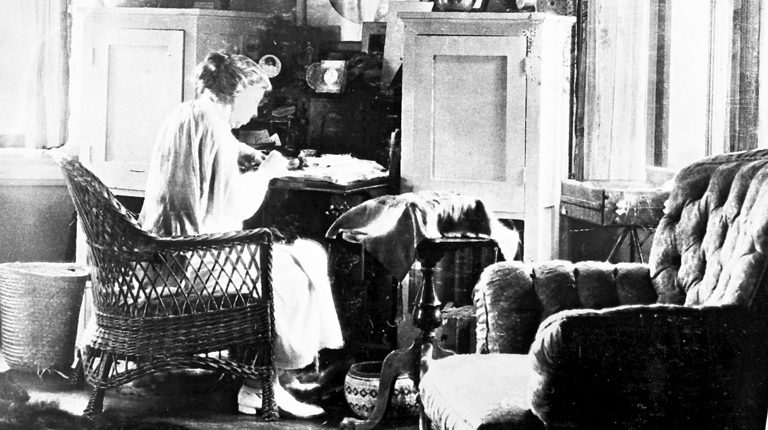Born in Massachusetts, on November 25, 1867, Mabel was the second of four daughters. She lost her hearing after a bout of scarlet fever when she was five years old, but thanks to her parents’ determination and her own remarkable spirit, she learned to lip read in several languages and remained an active participant in the speaking world. She attended schools in the United States and Europe before becoming a private pupil of Alexander Graham Bell’s in Boston. She inspired her father to found the first oral school for the deaf in the United States.
“And the prettiest thing of all is Mabel herself. Everything begins with her and works round again to the same.” — Mary Blatchford, 1911
Mabel and Alexander were parents to two daughters, Elsie May Bell, who married Gilbert Hovey Grosvenor of National Geographic fame and Marian “Daisy” Hubbard Bell. Mabel also bore two sons, Edward and Robert, both of whom died shortly after birth leaving their parents bereft.
As a family they spent the majority of time at their home at Beinn Bereagh, located in Baddeck, Nova Scotia, Canada, where her great passion for art, photography and gardening were at the centre of her world there. In the 1890s Mabel’s interests also encompassed handicrafts. Picking up on ideas made popular by the English arts and crafts movement, she tried to introduce better techniques and materials so that home crafts could generate significant income for rural women. It may have been her example that led her daughter Daisy, to back the work of American occupational therapist Lillian Burke, who about 1927 helped Acadian women in the Chéticamp area of Cape Breton turn rug hooking into a source of profit.






